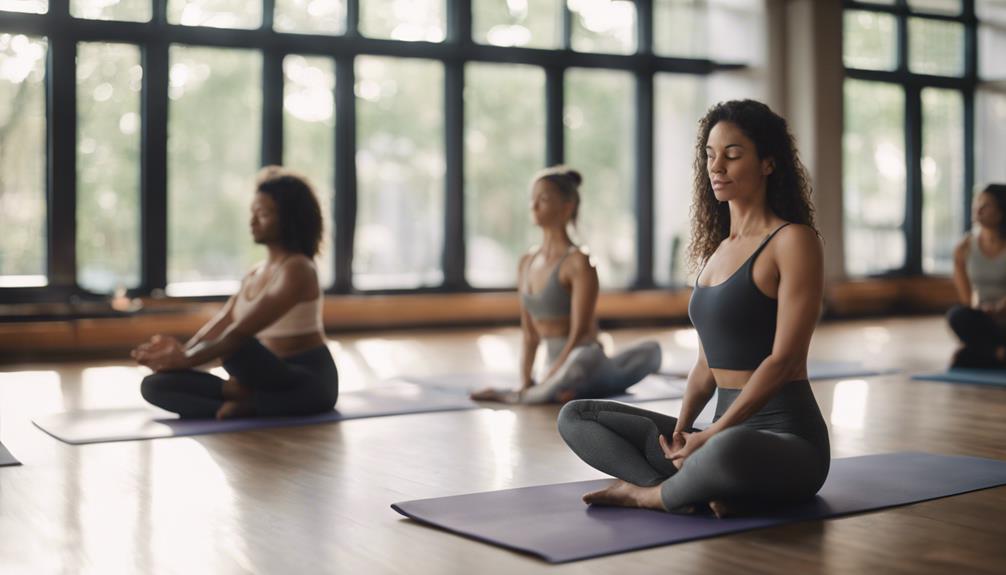Yoga Pad

Yoga is more than just a physical practice; it’s a way of life that promotes mindfulness, flexibility, and strength. Whether you are a seasoned yogi or a beginner, having the right equipment can greatly enhance your experience. Among the essential items for any yoga practitioner is a quality yoga pad. In this comprehensive guide, we will explore everything you need to know about yoga pads, from their benefits to how to choose the right one for your practice.
Understanding the Importance of a Good Yoga Pad
When it comes to practicing yoga, a good yoga pad is essential for several reasons. Firstly, it provides a stable and non-slip surface that is crucial for balance during various poses. A quality yoga pad absorbs impact, reducing the stress on your joints, particularly during more challenging postures. Furthermore, it creates a comfortable barrier between your body and the floor, making your practice more enjoyable. Investing in a high-quality yoga pad is an investment in your health and wellness.
Types of Yoga Pads: Which One is Right for You?
Yoga pads come in various types, each designed to cater to different styles of practice and personal preferences. The most common types include standard mats, travel mats, and extra-thick mats. Standard yoga pads are typically 1/4 inch thick and provide a good balance of comfort and stability. Travel mats are lightweight and foldable, making them perfect for yogis on the go. Extra-thick yoga pads (up to 1/2 inch thick) offer added cushioning, ideal for those with sensitive joints. Understanding these differences will help you select the right yoga pad for your practice.
Material Matters: What Your Yoga Pad is Made Of
The material of your yoga pad significantly impacts its performance and longevity. Common materials include PVC, TPE, rubber, and natural jute. PVC is a popular choice due to its durability and non-slip properties, but it is not eco-friendly. TPE is a more sustainable option that is lightweight and provides excellent grip. Natural rubber is another eco-friendly choice that offers superior traction, making it great for hot yoga. Jute, often combined with rubber, provides a unique texture and is also biodegradable. When choosing a yoga pad, consider both the environmental impact and your personal comfort.
Related Posts:
Thickness and Size: Finding the Perfect Fit
The thickness and size of your yoga pad can greatly affect your practice. Most standard yoga pads are about 1/8 to 1/4 inch thick, but some practitioners may prefer a thicker pad for added comfort. If you are practicing on hard surfaces or have joint issues, opting for a thicker yoga pad may be beneficial. In terms of size, ensure that your mat is long enough to accommodate your height and wide enough to allow for a comfortable range of motion. A standard size is typically around 68 inches long and 24 inches wide, but larger options are available for taller individuals.
Cleaning and Maintenance: Prolonging the Life of Your Yoga Pad
To ensure your yoga pad remains in optimal condition, regular cleaning and maintenance are essential. Most yoga mats can be easily cleaned with a mixture of water and mild soap. Wipe down the surface after each use to remove sweat and dirt, and allow it to air dry completely before rolling it up. For deeper cleaning, consider using a specialized yoga mat cleaner or soaking your pad in a bathtub filled with warm water. Be aware that certain materials may require specific care, so always refer to the manufacturer’s instructions for the best cleaning methods.
Eco-Friendly Yoga Pads: Making a Sustainable Choice
As awareness of environmental issues increases, many practitioners are seeking eco-friendly yoga pads. These mats are made from sustainable materials, such as natural rubber, jute, or cotton, and are often free from harmful chemicals. Choosing an eco-friendly yoga pad not only benefits your health but also contributes to the well-being of the planet. When shopping for an environmentally friendly option, look for certifications such as OEKO-TEX or GOTS, which indicate that the product is made from organic materials and adheres to strict environmental standards.
Budget Considerations: Finding Quality Without Breaking the Bank
Yoga pads are available at a wide range of price points, from budget-friendly options to high-end mats. While it may be tempting to opt for the cheapest option, it’s essential to consider the quality and longevity of the product. A higher-priced yoga pad may offer better durability, grip, and comfort, ultimately proving to be a better investment. That said, there are plenty of quality yoga pads available for under $50. Look for sales or discounts at local stores or online retailers to find a high-quality yoga pad that fits your budget.
Conclusion: Elevate Your Practice with the Right Yoga Pad
In conclusion, your choice of yoga pad can greatly influence your practice, comfort, and overall experience. By understanding the different types, materials, and maintenance tips, you can make an informed decision that suits your unique needs. Whether you’re practicing at home, in a studio, or on the go, having the right yoga pad can elevate your practice to new heights. Invest in a quality pad that aligns with your values, and enjoy the numerous benefits that yoga has to offer. Happy practicing!Is Sitting On A Yoga Ball Good